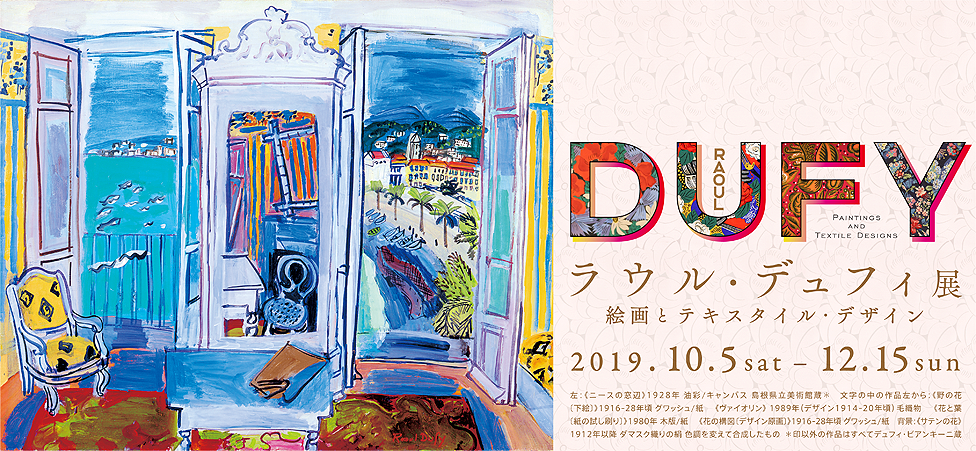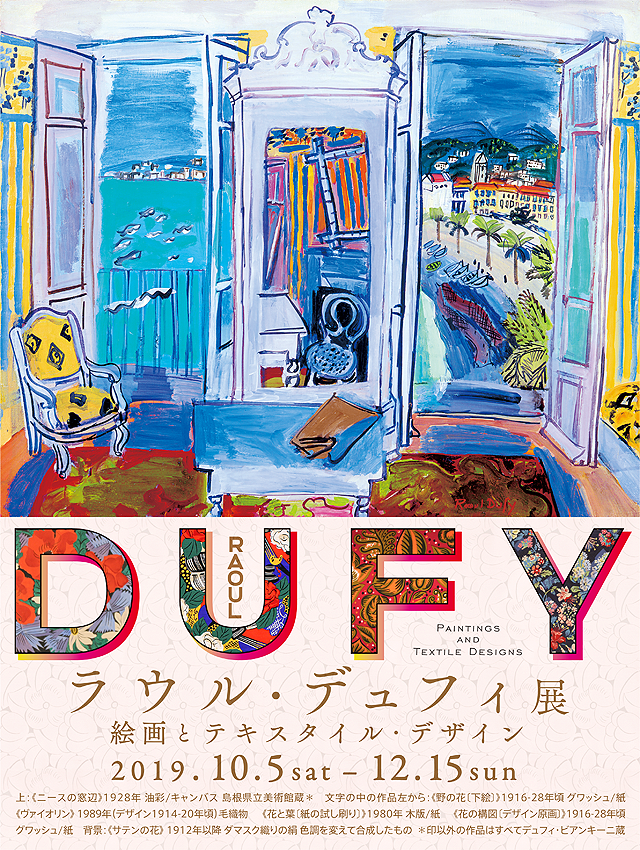Raoul Dufy: Paintings and Textile Designs


General Information
- Dates
- Oct. 5 – Dec. 15, 2019
- Hours
- 10 a.m. – 6 p.m. (Admittance until 5:30 p.m.)
* Open until 8 p.m. (admittance until 7:30 p.m.) on Nov. 1 and Dec. 6.
- Closed
- Wednesday
- Admission
- Adults: ¥1,000
Visitors aged 65 or over carrying proof of age: ¥900
Students (College): ¥700
Students (High / Middle school): ¥500
Admission is free for children in primary school and younger.
Groups of 20 or more will receive a ¥100 discount per person (not including those aged 65 or over).
Admission is free for disability passbook holders and up to one accompanying adult.
- Organizers
- Panasonic Shiodome Museum of Art, The Sankei Shimbun
- Support
- Embassy of France in Tokyo / Institut français du Japon, Minato City Board of Education

- Planning support
- Témoin Inc.
Exhibition overview
The works of artist Raoul Dufy (1877-1953) continue to captivate audiences with their bright, spectacular colors and delicate brushstrokes. This exhibition showcases Dufy’s stylish, graceful paintings as well as his work in textile design—particularly the silk textiles cherished by Paul Poiret, the man known as the King of Fashion.
Dufy’s scenes of music and social life are suffused with a sense of joie de vivre, as exemplified in the oil painting Window Opening on Nice, which depicts the warm sunlight and calm seas of southern France through the windows of a vibrant hotel room. Dufy also designed textiles for Lyon-based silk manufacturer Bianchini-Férier from 1912 to 1928. His fabrics became a sensation, charming upper-class women with their vivid colors and bold motifs. This exhibition pulls from the Bianchini-Férier archives—now owned by Dufy-Bianchini—to introduce visitors to Dufy’s design drawings and paintings, original textiles, and prototype prints, as well as clothing made from reproductions of his textiles.
By viewing works by an artist who nimbly traversed two different artistic mediums—paint and textile design—visitors will discover the essence of Dufy’s artistic expression and the significance of decoration in his works.





